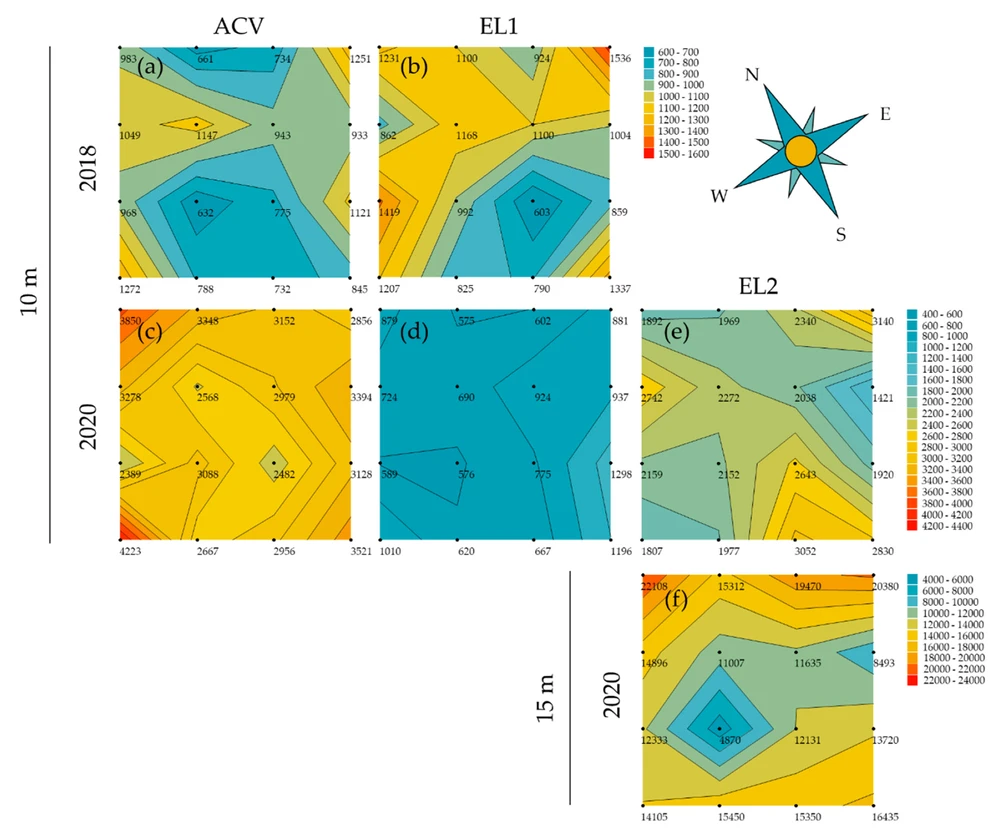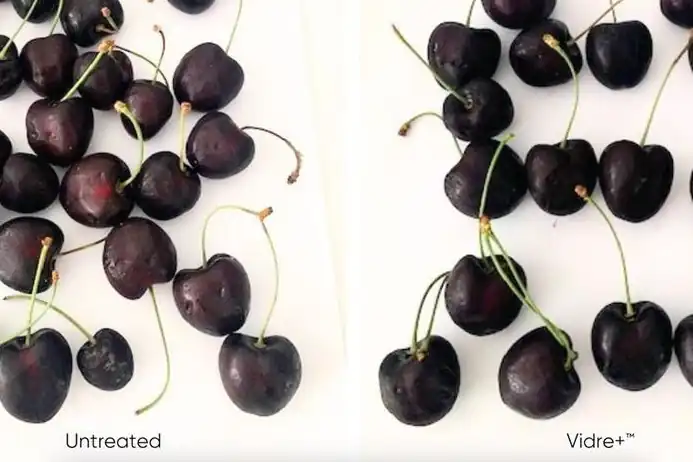Drosophila suzukii is an invasive insect that has become a key pest of soft-fleshed fruits such as cherries over the last decade. Current pest control strategies often rely on broad-spectrum insecticides, which also affect non-target insects.
To improve this aspect, research is focused on developing more sustainable and safer alternative control strategies. A promising approach is mass trapping, which uses traps containing a killing agent combined with specific attractants to selectively reduce the target pest population.
Evaluating synthetic baits for trapping
A recent study evaluated the effectiveness of traps with controlled-release synthetic baits, comparing them to apple cider vinegar (ACV), used as a reference. The trials were conducted over two years using grid-based trapping schemes with variable distances (5, 10, and 15 meters) and at different times of the season.
The results show trap interference and overlapping attraction radii for both synthetic baits and ACV. In spring, apple cider vinegar demonstrated a greater potential for mass trapping, while from June onwards, synthetic baits performed as well or better than ACV.
 Figure 1. Contour plots for the trials in summer at 10 and 15 m inter-trap spacing. Each point of the 4 × 4 grids represents the pooled D. suzukii (male and female) trap catches for a trap position over the whole trial period (August/September) and the four replicate grids. Source: Klymans et al., 2022.
Figure 1. Contour plots for the trials in summer at 10 and 15 m inter-trap spacing. Each point of the 4 × 4 grids represents the pooled D. suzukii (male and female) trap catches for a trap position over the whole trial period (August/September) and the four replicate grids. Source: Klymans et al., 2022.
Optimizing trap density
The study recommends a trap density between 75 and 200 units per hectare in spring and between 90 and 300 units per hectare in summer for controlling Drosophila suzukii. However, these numbers vary depending on the attractant used, environmental conditions, and the season.
In particular, in September, the synthetic bait EL2 (kairomone-based) required only about 25 traps per hectare, demonstrating potential as a long-lasting attractant. The study suggests that mass trapping could be integrated into Drosophila suzukii management, helping to reduce insecticide use and promoting more sustainable agricultural practices.
Advantages of mass trapping
The behavioral characteristics of Drosophila suzukii make a large-scale approach with well-distributed traps particularly effective. Females lay eggs inside fruits while they are still ripening, making preventive strategies essential to contain population spread before oviposition occurs.
Another advantage of mass trapping is the ability to monitor D. suzukii populations, allowing targeted interventions only when necessary. Traps with synthetic baits have proven particularly effective in capturing a significant number of individuals, reducing pest presence without extensive chemical use.
This method can therefore help preserve biodiversity, avoiding negative effects on pollinators and other organisms.
 Figure 2. Number of D. suzukii flies per trap per sex and attractant in August. Jittered points and boxplots represent the 64 replicate traps and their distribution, respectively. Black triangles represent the estimated marginal mean number of D. suzukii flies per trap (GLMM). Source: Klymans et al., 2022.
Figure 2. Number of D. suzukii flies per trap per sex and attractant in August. Jittered points and boxplots represent the 64 replicate traps and their distribution, respectively. Black triangles represent the estimated marginal mean number of D. suzukii flies per trap (GLMM). Source: Klymans et al., 2022.
Future research and implementation
Further studies are needed to determine the optimal bait doses and their real impact on D. suzukii populations in the long term. Additionally, it will be important to assess their effectiveness under different climatic conditions and crop types to better adapt control strategies.
Mass trapping with controlled-release baits could become a valuable strategy in integrated pest management programs for controlling Drosophila suzukii. If future research confirms the effectiveness of this technique, farmers could benefit from a sustainable and economically viable option to protect their cherry orchards while reducing their reliance on chemical products.
Source: Clymans, R., Van Kerckvoorde, V., Thys, T., De Clercq, P., Bylemans, D., & Beliën, T. (2022). Mass trapping Drosophila suzukii, what would it take? A two-year field study on trap interference. Insects, 13(3), 240. https://doi.org/10.3390/insects13030240
Images: Bayer Crop Science; Klymans et al., 2022.
Andrea Giovannini
University of Bologna
Cherry Times - All rights reserved














